Healthy, happy tulips will always grow straight and vertical, but if your tulips are bending or leaning, something is wrong with their health.
If your tulips are leaning, this article will help you find out why are your tulips leaning and what one can do to fix this problem.
Tulips are plants with long slender stems, and they tend to lean towards the light source. So, if your tulips are not receiving even lighting conditions, then they are likely to lean towards one side. Other causes of a leaning plant include improper watering and over-fertilization.
To fix the leaning tulips, you need to examine the plants and figure out the actual cause and take necessary steps as required. Provide your tulips with the correct remedy and care to help them grow straight and healthy.
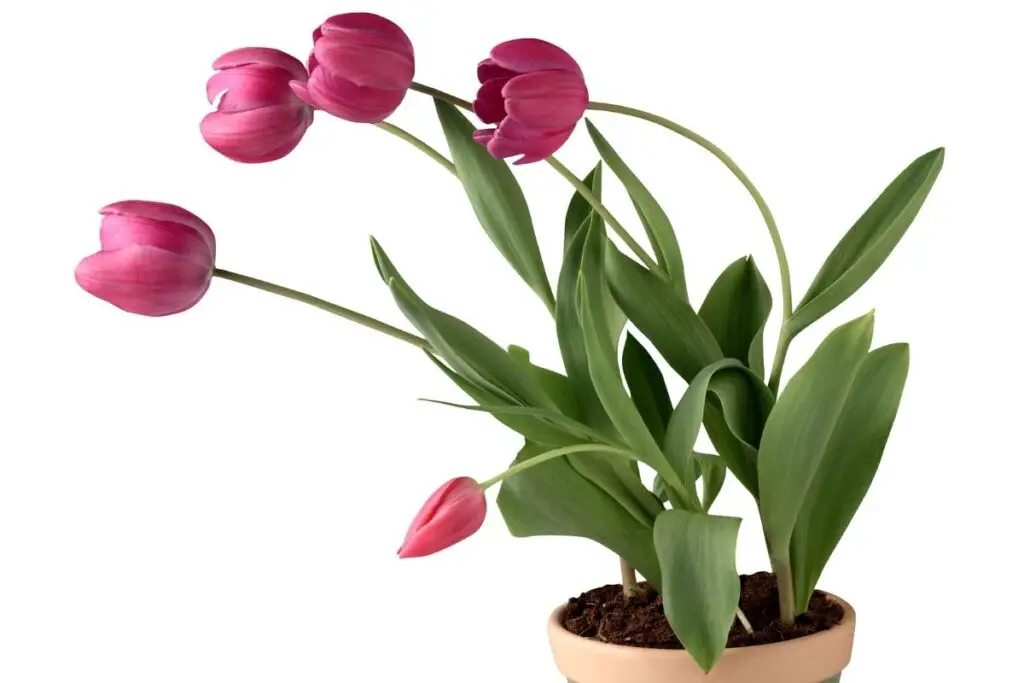
My tulips are leaning
When your tulips lean, it indicates that they have used all their energy to grow in one direction and are too weak to stand correctly. Your tulips can lean due to the following reasons:
- Poor lighting conditions
- Improper watering
- Low temperatures
- Inappropriate fertilization
- Environmental stress
- Poor soil conditions
- Lack of pruning
- Pest infestations
Now, I will discuss each point in detail to understand the leading cause of leaning and fix it.
Poor lighting conditions
Light is an integral part of tulip’s life, and they will lean to one side if they don’t get proper light.
Tulips are outdoor plants and require bright direct sunlight for growth. Tulips are phototropic, and they often bend in search of light.
If they are under any shaded region without enough sunlight, they will grow spindly and bend more towards the light.
Insufficient light will offer little energy to the plants for growing stems, so their growth rate decreases, and it starts to lean in search of light.
Your tulips can also lean if is exposed to intense sunlight. Tulips don’t like harsh sunlight, and an overdose of sun exposure will cause them to have damaged leaves and stems, petals curling up, thus making them too much weak.
If your tulips become weak, they will not have enough energy to stand correctly and start leaning.
Also read: How Much Sunlight Do Tulips Need? (Tulip Light Needs)
Improper watering
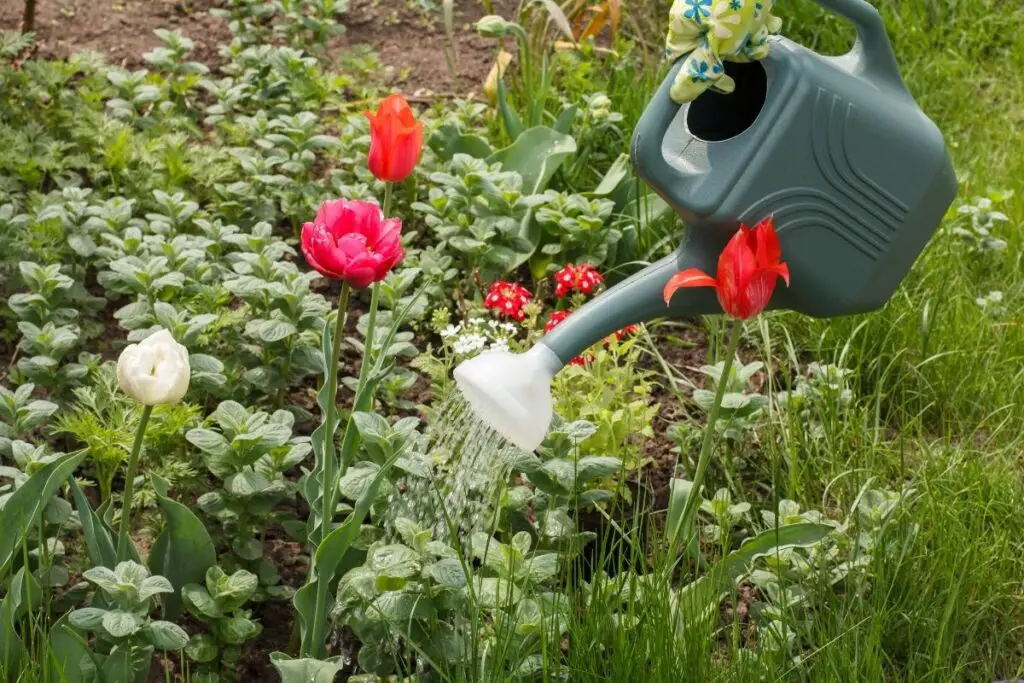
Tulips require minimum watering and can easily rot if left in soggy soil for a few days. They can survive a dry period for some days but will be bound to get root rot if you overwater them.
Sometimes we overwater tulips out of care, but this will undoubtedly harm them with numerous issues, including leaning.
Root rot damages the roots of your plant, due to which it becomes difficult for them to take in water and nutrients from the soil.
Without proper food, the plants struggle to survive, become weak and vulnerable, and start leaning.
Not only overwatering but underwatering can even cause your plants to lean. The root of your plant will get dry if you underwater them.
A lack of water will cause the roots of your tulips to become delicate, and the soil won’t be able to hold the plant properly, which will ultimately make your tulips lean.
Also read: How Often Do Tulips Need To Be Watered? (Tulip Watering Needs )
Low temperatures
Tulips are hardy plants, but late spring frost can havoc on newly blooming tulip plants.
They need cold temperatures to bloom, but they don’t prefer freezing. Freezing temperatures will damage tulips cell walls, reduce the water level, and cause the stem to lose rigidity.
When the temperature warms, the cells function well if not severely damaged. So, most of the time, tulips will return to their straight position with warm weather.
Also read: What Temperature Do Tulips Need? (+Growing Them At Different Temperature)
Inappropriate fertilization
Tulips don’t require too many additional nutrients for growth. But sometimes, improper fertilization can be a reason for your tulips to bend. Tulips need very little fertilization, and over-fertilizing can harm them.
Overfertilization will burn their roots due to the excess salts and make the plant dry and weak. Overfertilization can even shock your tulips and kill them.
So if you think adding more fertilization will increase more growth of your plant, then you are wrong. It will make them lean.
Even poor fertilization can damage your tulips. If you do not provide your plants with the required nutrition, they will face growth problems and start leaning.
Also read: What Is The Best Fertilizer For Tulips? (Organic+Inorganic)
Looking for gardening supplies? We have tested 100's of products before recommending them to you guys. Check out our best pick below:
| Image | Gardening Supplies | Best Price? |
|---|---|---|
 Top
Top Top
Top | Raised Garden Bed Kit | Check On Amazon |
 | XLUX Soil Moisture Meter, Plant Water Monitor, Soil Hygrometer Sensor for Gardening, Farming, Indoor and Outdoor Plants, No Batteries Required | No Results |
 Top
Top Top
Top | 82 Pcs Garden Tools Set and Extra Succulent Tools Set | Check On Amazon |
 | Joeys Garden Expandable Garden Hose with 8 Function Hose Nozzle, Lightweight Anti-Kink Flexible Garden Hoses, Extra Strength Fabric with Double Latex Core, (50 FT, Black) | No Results |
 Top
Top Top
Top | Dual Chamber Compost Tumbler | Check On Amazon |
 Top
Top Top
Top | Sunnyglade Plant Stakes | Check On Amazon |
 Top
Top Top
Top | Organic Cold Pressed Neem Seed Oil | Check On Amazon |
 Top
Top Top
Top | Mighty Mint Gallon :-Insect and Pest Control Peppermint Oil | Check On Amazon |
 Top
Top Top
Top | Scotts DiseaseEx Lawn Fungicide | Check On Amazon |
 Top
Top Top
Top | Jacks Classic 20-20-20 All Purpose Fertilizer | Check On Amazon |
 Top
Top Top
Top | 30,000 Seeds Pollinator Attracting Wildflower Mixture | Check On Amazon |
 Top
Top Top
Top | Survival Vegetable Seeds Garden Kit-Over 16,000 Seeds | Check On Amazon |
Environmental stress
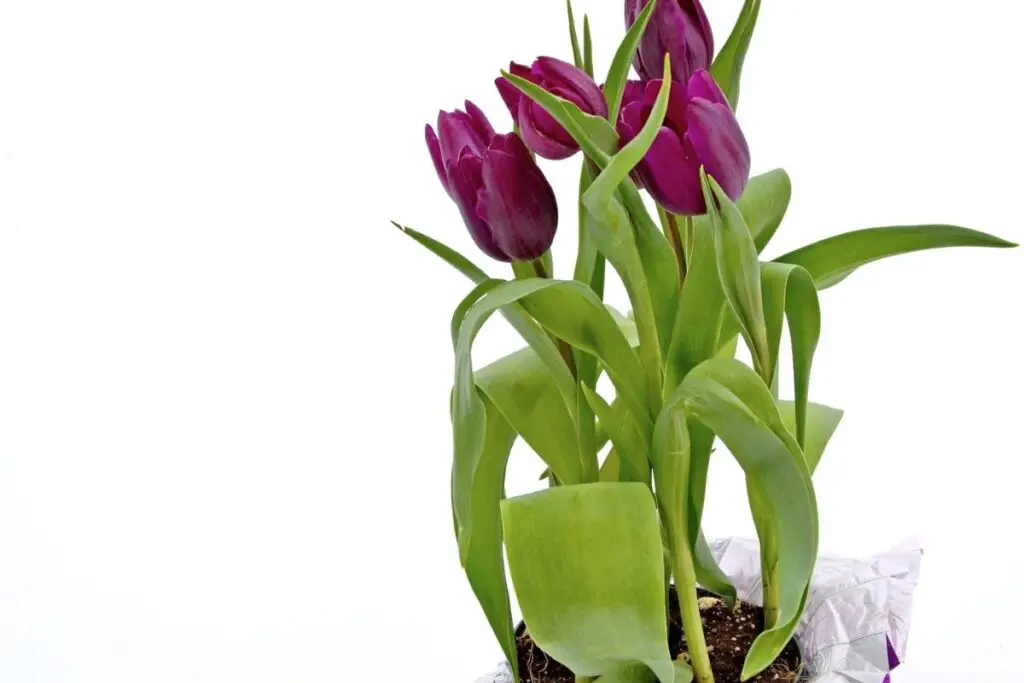
Tulips can even bend due to environmental stress. Hail, sleet, or strong wind can cause tulip bulbs to lean and fall over. It can freeze or burn your plant’s foliage if the wind is cold.
But when the intense sunlight arrives, they are most likely to stand upright again unless any sheer force breaks the stems of the environment.
Also read: Where Is The Best Place To Plant Tulips? (+Factors To Consider)
Poor soil conditions
Tulips prefer rich, well-draining soil, and planting them in poor soil can cause several health problems to the plant that can lead it to lean and fall.
The soil where you grow your plant will influence both overwatering and underwatering. It will impact whether your tulips have a stable base to grow straight or not.
If the soil is soft and porous, it won’t hold the weight of the plant and roots and will cause your plant to fall and lean.
If the soil is clayey, it will retain too much water, which is not suitable for your tulips, and it will cause root rot problems to them. Also, if the soil is too sandy, it will drain water and nutrients faster, causing the plant to be weak and lean over.
Also read: What Kind Of Soil Is Good For Tulips? (Best Soil Mix)
Lack of pruning
Every plant requires pruning to remain in shape and to encourage new growth. As tulips grow older, they naturally wilt, but they will face problems if not pruned.
If the plant grows more prominent, it becomes too heavy to stand upright and lean.
The unhealthy stems, leaves, or branches stress the plant more, and it consumes the plant’s energy, restricts new growth, and makes them weak.
Pest infestations

Tulips are outdoor plants, and they may get attacked by any pest or disease. This problem is big enough for your plant’s poor health, making them lean.
A few common pests that attack tulips are aphids, spider mites, and slugs. These pests suck the sap from the tulips, taking away all their nutrients.
Pests like Cutworms will eat the base of the plant and cause them to lose balance and fall. So it’s necessary to take immediate actions whenever they are affected by any pest.
Also read: Bugs On Tulips: (Common Pests, Identification+How To Get Rid)
How to fix a leaning tulip plant?
If you want to prevent your tulips from leaning, you need to consider their basic requirements. Read on for further information.
Plant your tulips in a bright location

Tulips are outdoor plants, and they need a good amount of sunlight for creating energy for surviving.
Tulips grow best in direct sunlight and need 6 hours of minimum sunlight every day to grow at their full potential. They also need shade in scorching afternoons as they don’t prefer to grow in too much heat.
You can choose a bright and sunny spot in your garden to grow tulips. Make sure that the spot provides sunlight for most of the day.
The struggles in intense sunlight and zones 8 and 9, you should plant them in a shady site only to protect them from sunburn.
They grow well in gardens beds, near shrubs, or under trees. If your tulips are not getting proper sunlight, dig them gently of the ground and reposition them in a sunnier location.
Give the right amount of water to tulips
Garden tulips don’t require frequent watering. They need a minimum of 1 inch of water per week, particularly in late winter or early spring.
Water them whenever the soil feels dry at 2-3 inches depth to touch.
Don’t water them in the dormant season. They will not require much watering when it has stopped blooming, and only ½ inch of water per week is enough to keep them alive.
Grow them in raised beds to avoid drainage problems. If you have overwatered your tulips:
- Leave your tulips to dry in the sun for a few weeks so that they can heal naturally.
- If the condition is severe, transplant them to another location where it is dry to recover quickly.
If you have underwatered tulips:
- If you find the soil dry and flaky, water it thoroughly regularly.
- In hot conditions, provide them with some temporary shade to avoid quick evaporation from the soil.
Avoid using poor-quality soil.
Tulips prefer rich, well-draining, sandy, or loamy soil. The soil should not be soft and porous, but it should have the capacity to hold the weight of the plant and roots.
Grow your tulips in soil that can hold enough water and drain the excess moisture. Also, the soil must contain enough nutrients to keep the tulip healthy.
Ensure that the soil’s ph level is between 6.0 to 7.0 for your plant. You can prepare your soil mix for healthy and beautiful blooms by combining sand with peat moss, organic matter, and manure compost.
Protect them from environmental stress
To protect tulips from excessive cold, you can add a layer of mulch around the plants to prevent them from falling over. This technique will insulate them against cold.
If the wind is cold, You can bring the potted tulips indoors, and for outdoors tulips, you can use a windshield. You can use a fabric cover, cloche to cover the plant. Ensure that the cover doesn’t touch the plant as it can conduct cold and damage it.
Provide adequate fertilizer
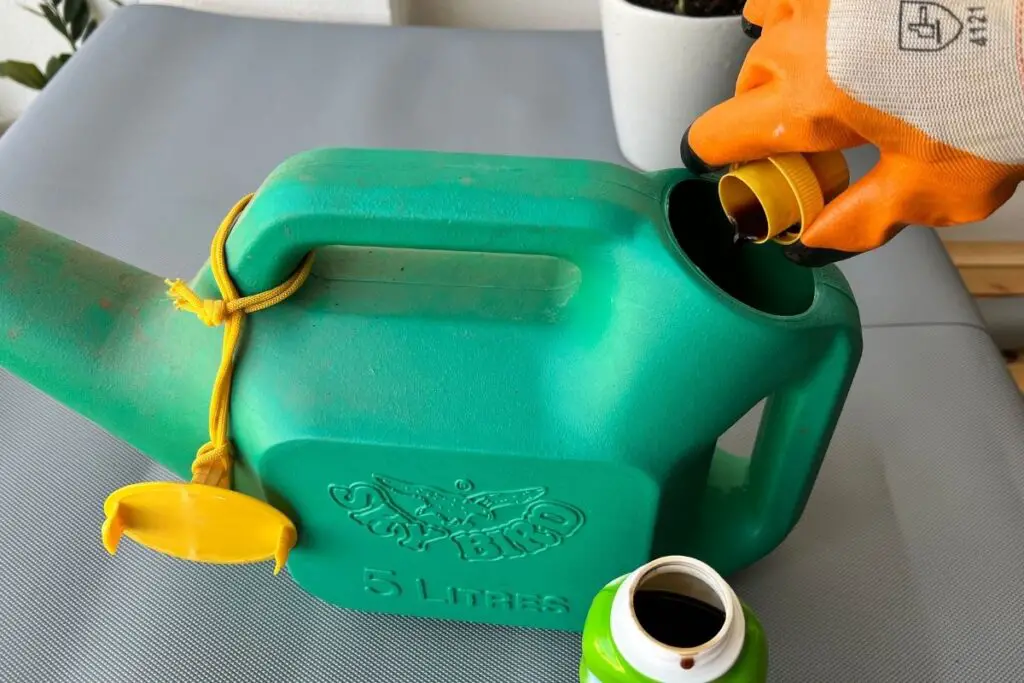
Fertilize your tulip bulbs once a year in the fall. Go for a well-balanced slow-release fertilizer with a nutrient ratio of 10:10:10.
Tulips require nutrients in small amounts, and a slow-release fertilizer will release nutrients to the roots from time to time, avoiding the issue of over-fertilization.
You can also go for organic fertilizers such as bone meal, compost, and green sand to fertilize tulips.
For fertilizing tulips, first, choose your slow-release fertilizers. Then dig the top 10 to 12 inches of soil by using a spade, apply ½ pound of fertilizer in a 50 square feet bed.
After that, appropriately amend the soil with compost and fertilizers and after amending, plant your tulips 5 – 6 inches deep in the soil and cover it with soil mix. Then water your plant thoroughly to remove air bubbles.
If you have over-fertilized tulips, then:
- Remove the damaged leaves and stems.
- Flush the soil to remove the excess fertilizers.
- You can also remove the top few inches of soil to separate the excess fertilizers.
Eliminate pests and diseases
You can control pests and diseases in many ways. You can go for natural remedies like neem oil, vinegar, garlic, and insecticidal soap. But whatever you are using will depend on the type of pest that attacked your plants.
Permanently remove the infected part of the plant before applying any remedy. You can use fungicidal sprays to get rid of fungal disease.
In case of any viral disease, you need to dispose of your plant as there is no other way to save your plant.
Timely prune your tulips
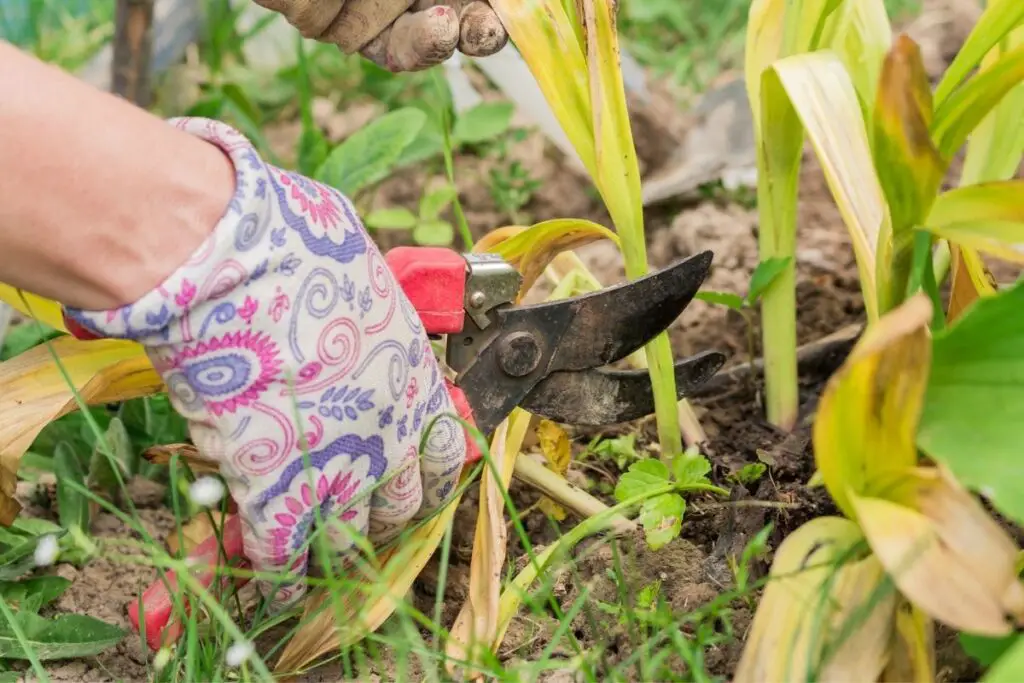
First, remove all the unhealthy leaves and flowers to prune your tulips. If your tulips are falling over, clip off the faded flowers and the extra foliage but leave the stem and leaves until they turn yellow or brown and fall by themselves.
The old foliage provides them with the nutrients which will allow the tulip to return next year.
Never prune ¼ of the plant at a time. If you prune too much, the plant may suffer from shock and have stress and poor health. Always use clean pair of pruners for trimming the plant.
Support your tulips using stakes
One way to keep your tulip plant upright is by using a garden or wooden stake. Staking will provide strength and support to the plant and keep them upright.
The steps involved in staking a tulip plant are:
- First, measure the height of the plant from the ground.
- Buy some plant stakes, usually bigger than the plants.
- Then put the stakes into the soil next to the tulips. Insert the stakes so that they can hold the weight of the plants.
- Bind the planta and the stakes together using plant tape. Do not force the plants to stay upright, but allow them to be slightly more upright than before, and check the plant every few days.
- Leave the plant stakes until the tulips grow upright for at least a month to ensure they will not return to their leaning position.
Final words
Tulips may lean if they don’t have enough strength to hold their weight. To prevent your tulips from leaning, first, examine your plants and figure out the actual cause before taking action.
Provide your tulips with a suitable and sufficient amount of sunlight to promote their growth. Fertilize them with a slow-release fertilizer once a year during fall. Water your tulips once a week without overwatering them.
Use rich, well-draining soil that can hold the weight of roots and plants.
Prevent pest disease by using neem oil, insecticidal soap, or pesticides specific to the pest. Prune the faded flowers and the damaged leaves and stems but avoid pruning the old foliage.
Protect them from frost and cold drafts by mulching the plant or using windshields. You can use a wooden stake to hold your tulips upright.
Source: Wikipedia, North Dakota Stae University, The Royal Horticultural Society.
